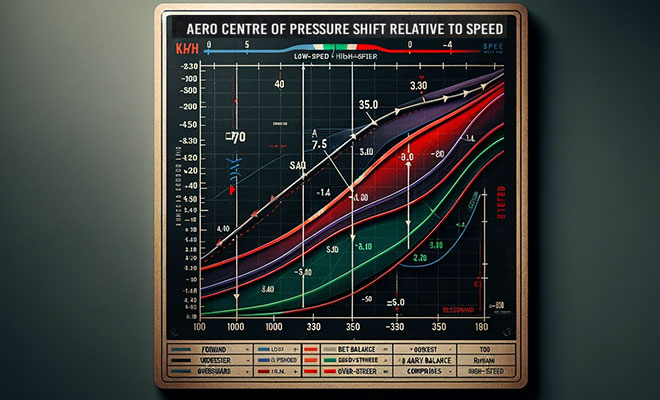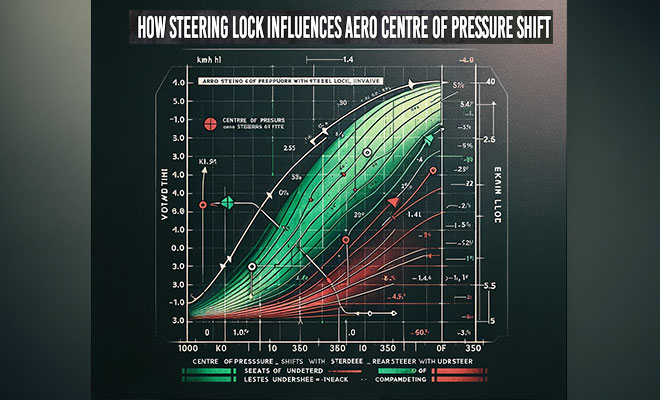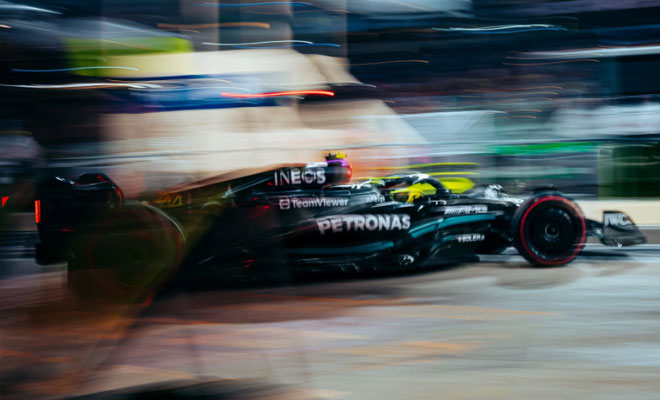As the 2024 Formula 1 season approaches, ten teams are eagerly refining their designs and strategies, with high hopes pinned on the test in Bahrain. The race against time and technology begins now, with aspirations and engineering prowess on the line.
As the new year approaches, ten Formula 1 teams are fervently hoping that 2024 will fulfill their yuletide aspirations. This period is critical for finalizing the design of their new cars. They must ready these machines for an exclusive test in Bahrain, scheduled for February 21-23. These squads are in a race against time, meticulously preparing every detail. Anticipation builds, as each team’s engineers and designers put in long hours. It’s a time of high hopes and intense focus, with everyone aiming to make the upcoming season their most successful yet.
Merely a week afterward, it’s time to race. The results of this test and the inaugural race weekend will serve as a litmus test, revealing which teams have progressed, stagnated, or, regrettably, regressed.
Unveiling a new car is akin to the anticipation of Christmas morning. Teams yearn for something groundbreaking and thrilling, not the mundane predictability of yet another pair of socks. However, unlike the surprise of Christmas gifts, as a technical director, you’ve monitored your car’s evolution daily. Eddie Jordan had a frequent sentiment that he shared with me when the car first touched the ground: he assumed I’d be impressed with its aesthetics. My response was always, ‘Eddie, I’ve watched it take shape over the past six months.’
Mastering Aero Dynamics for F1’s Pivotal Performance
What we perceive is what I term a ‘visual concept’, indicating how the car’s body shapes the airflow dynamics around it. Equally vital, yet less visible, are the internal mechanisms. However, in reality, these factors have a marginal impact on the car’s actual functionality. Rather, the performance specifications set months prior are the real determinants. The airflow’s design is crucial to fulfilling these specifications, especially through the various dynamic states the car encounters.
Apart from perhaps the last 100 meters of each lengthy straight, where minimal drag is desirable, the car is perpetually in motion. Deceleration induces pitch, turning into corners generates yaw – essentially a four-wheel drift – and acceleration out of corners causes the car to squat.
These conditions are pivotal in providing the driver with stability and, consequently, the confidence to progressively push the boundaries to discover the car’s true potential. If the car lacks consistency and unexpectedly responds, drivers will instinctively shy away from its limits, a hesitation clearly reflected in the timings.
Crafting a performance profile that excels in straight-line speed or at a specific ride height is relatively straightforward. However, the real challenge lies in accommodating an aerodynamic entity that is in a state of flux for 99% of a lap.
Throughout the winter, as research and development advance, this performance specification undergoes continual refinement. This ensures that when the car finally takes to the track, teams have a clear expectation of its capabilities. This knowledge forms the basis for what promises to be a long and demanding season.
Teams Tackle F1’s Balance: Aero and Mechanical Mix
For the lead aerodynamicist, chief designer, or head of vehicle dynamics, the challenge is to steer your team towards meeting the objectives outlined by the technical director in the performance specification. The path should never be linear; it’s about persistently pursuing that incremental improvement. If the process feels too effortless, the targets weren’t ambitious enough. It’s a delicate balance between overachieving and falling short.
In essence, the quest for this ideal won’t conclude until the season’s final checkered flag is waved. Pre-season Bahrain, however, stands as a critical juncture to affirm the set direction. More crucially, it’s a time to ascertain its validity. Teams understand that this period can make or break their year. Thus, the focus and intensity in their preparations are palpable. Ultimately, every decision made now will resonate throughout the racing calendar.
The mechanical intricacies of these cars hold substantial importance, yet the paramount factor in performance is predominantly governed by aerodynamics. The mechanical aspects must not only be compatible but also augment the aerodynamic load profile, a topic I’ll delve into subsequently.
The essence of what instills driver confidence in a racing car has remained constant.
Over my 50 years in racing, I learned that a balanced car lets drivers use their skills for the best lap times. If the car is unstable or understeers, as Lewis Hamilton noted in 2023, it quickly clouds their confidence and ability.
Seeking F1 Balance: Teams’ Quest for Consistency
What then constitutes a well-balanced car? For the 2024 season, I’ve outlined key objectives for my research and design team. Some cars will naturally align with this to a degree, necessitating only minor refinements. However, for many, this will signify a fresh trajectory in their development strategy.
Taking Mercedes as an illustrative case, their performance trajectory during the 2022/23 seasons seemed erratic, with performances fluctuating without clear predictability. Despite high hopes, not all aspirations materialized, with the final update in 2023 at Austin being perceived as a foundational step towards 2024.
In Austin, the car showed promise, and Hamilton’s excitement was palpable. Yet, a disqualification due to excessive plank wear followed. In the subsequent Mexican race, Hamilton vocalized the car’s inconsistency, illustrating that Mercedes’ operational window was too narrow and elusive.
However, this isn’t a narrative unique to Mercedes. Red Bull’s experience in Singapore exemplified how missing the optimum setup can rapidly relegate a team to the back of the pack. A closer examination across all teams reveals a common theme of inconsistency, attributed to an overly critical operational window.
Possessing a stable tire-load characteristic across the spectrum of speed and steering angles is crucial. With the tire balance inherent in these current cars, one would typically experience understeer in slow and medium-slow corners and oversteer in medium-fast to fast corners.
FIA 2022 Rules: Navigating Aero vs. Mechanical Grip
The 2022 regulations introduced by the FIA have significantly curtailed mechanical load transfer associated with varying steering angles. Now, there’s limited mechanical scope to alter the load distribution across the front axle in slow-speed, high-steering-lock corners. Thus, the primary instrument at your disposal is once again the aerodynamic center of pressure shift, which, in essence, is synonymous with tire load characteristics.

In the first graph, I plot the center of pressure shift against speed, linked to ride height. As the car speeds up, the aerodynamic load increases exponentially. Even with stiff springs, the car gets closer to the track, squashing the tires until airflow issues arise.
In practice, spring stiffness and tire rigidity must be harmonized. Therefore, the car’s vertical compliance is a composite of both elements. Utilizing solid springs or excessively high tire pressures will lead to a significant loss of grip and accelerated tire wear.
The blue line in the graph represents a stable center of pressure with increasing speed or decreasing ride height. While this might seem ideal, it would make it challenging to consistently balance the car across varying corner speeds, necessitating numerous balance compromises from one corner to the next and particularly from one circuit to another.
Red vs. Green: F1’s Quest for Optimal Pressure Shift
Conversely, the red line depicts the center of pressure advancing forward as speed increases or ride height decreases. This scenario would result in a nervous, oversteery car, prompting the driver to diminish the front wing angle to mitigate the oversteer, consequently inducing substantial low-speed understeer. This would leave the driver with an inconsistent car, far from the desired consistency any driver would hope for in the new season.
The green line illustrates the center of pressure shifting rearwards as speed increases or ride height decreases. Achieving this dynamic allows for a forward center of pressure in medium- and slow-speed corners, enhancing the car’s stability. As the center of pressure moves rearward with reduced ride height, the car’s rear end stabilizes significantly in fast corners, allowing for front wing angle adjustments to fine-tune the balance.

In the second graph, steering lock characteristics are incorporated into this principal green rearward center of pressure shift. The slower the corner, the greater the steering angle required, providing an additional tool in the driver’s arsenal.
Steering Dynamics: F1’s Drive for Control and Grip
As the car speeds up, the red or green lines shorten. This indicates less steering lock due to the aerodynamics affecting wheel angle. For a fast corner, about a three-degree road wheel angle is needed with a typical 10:1 steering-rack ratio. This increases to six, nine, and twelve degrees for medium/fast, medium/slow, and slow corners respectively.
The Monaco hairpin, an outlier, requires a much more significant steering modification, typically adjusted exclusively for that race. Multiplying these numbers by 10 gives a visual representation of the steering-wheel angle as seen from the onboard camera.
If a car exhibits the red line characteristic, it tends to confuse the driver. An instinctive reaction to understeer is to increase the steering lock, but with this characteristic, it only exacerbates the understeer.
Conversely, with the green line characteristic, increasing the steering lock shifts the center of pressure forward, mitigating understeer and instilling confidence in the driver to handle such situations.
Ultimately, it’s about giving the driver confidence. No car is perfect, but consistent features and proper tools are crucial. This ensures drivers have the confidence and control to push to the limits.
Balancing Aero and Mechanics for F1 Lap Mastery
Achieving the desired aerodynamic performance profile is only the beginning; maintaining its consistency is the real challenge. This is where the mechanical aspects become crucial. The driver’s confidence during the transient conditions encountered throughout a lap is essential. This begins the moment the driver applies the brakes for the first corner, with braking stability being the primary concern.
Subsequently, the level of confidence the driver feels in their steering input is pivotal. If they’re tentatively feeling for the car’s balance, it indicates a lack of aggression, leading to premature turning and likely understeer. The driver will then rely on their skill to optimize the exit, but the entry phase is critical for corner speed and, consequently, lap time.
This is where suspension characteristics are key. Red Bull, for instance, has incorporated more anti-dive mechanisms in the front suspension and anti-lift in the rear than any other team. Their focus has been on creating an aerodynamic profile that ensures stability and a suspension system that maintains it as effectively as possible. Without this synergy, the team would face continual compromises from one circuit to the next.
Chasing Red Bull: F1 Teams’ Quest for Innovation
The process is complex. Red Bull set a high bar in recent years. Other teams must now meet this challenge. They shouldn’t just copy Red Bull’s design. Instead, they need to grasp and adapt the underlying principles of their success. This is crucial, especially now with budget caps limiting major developments during the season.
When discussing car concepts, it’s crucial to focus not on the car’s appearance but on its behavior across a wide range of transient conditions. Determining the desired characteristics is one challenge; successfully implementing them is another. This complexity is what makes Formula 1 engineering such a demanding and fascinating field.
In the world of Formula 1, Aero F1 Teams play a pivotal role. These Aero F1 Teams are dedicated to pushing the boundaries of aerodynamics to gain a competitive edge. The expertise of Aero F1 Teams in aerodynamics is crucial for achieving top speeds and optimizing downforce. Aero F1 Teams continually innovate and refine their aerodynamic designs to enhance their car’s performance. Enthusiasts closely monitor the on-track performances of Aero F1 Teams. The aerodynamic developments of Aero F1 Teams can often be the deciding factor between victory and defeat in the highly competitive realm of Formula 1.
You May Like Also – MCLAREN’S DRAMATIC SURGE WITH LANDO NORRIS
Stay informed on the latest Formula 1 updates by following us on Facebook and Twitter.
